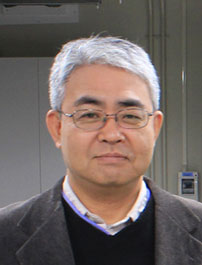Keynote Session
The evolution and future of coupled analysis for geomaterials.
- Prof. Atsushi Iizuka
- Kobe University

Biography
Atsushi Iizuka was born in Osaka, Japan on March 30, 1959. He received his Bachelor’s degree in 1981, his Master’s degree in 1983 and his Doctorate in 1988 from Kyoto University. In 1984, he began his carrier in the Department of Civil Engineering at Kyoto University and then he moved to Kanazawa University in 1988, to Kobe University in 1997 and was promoted to be Professor at Kobe University in 2005. When asked about him on ChatGTP, it states “Atsushi Iizuka is a Japanese geotechnical engineer and academic, known for his contributions to disaster prevention and resilience engineering. His career began with a focus on geotechnical engineering, particularly in understanding the mechanical behavior of soils and developing numerical simulation techniques for ground deformation. He served on the university’s board of trustees and was the director of the Information Science and Technology Center at Kobe University. Following the devastating Kobe earthquake in 1995, his research expanded into disaster prevention and mitigation, leading to his involvement with the Research Center for Urban Safety and Security at Kobe University, where he served as director. His interdisciplinary approach to disaster resilience includes collaboration with renowned institutions like RIKEN R-CCS, JAMSTEC, and E-Defense.” In 2024, he left Kobe University upon retirement and moved his activities to the Research and Development Initiative of Chuo University.
Introduction of the Lecture
Geomaterials are considered as a continuum consisting of three overlapping phases: soil skeleton, pore water, and pore air. Terzaghi's one-dimensional consolidation theory, in which the coupling between soil deformation and pore water motion is attributed to a heat conduction-type equation, has made a significant contribution to practice up to the present. Theoretically, however, it does not constitute a proper boundary value problem for conserved systems. In this presentation, I will address multidimensional boundary value problems ranging from coupled saturated soil problems treated as two-phase mixtures to coupled unsaturated soil problems treated as three-phase mixtures. These problems have developed along with the progress in modeling the constitutive relationships of the soil skeleton. In recent years, however, coupled problems with chemical reactions, such as denaturation of materials, have been required not only in the mechanical field. In addition, with the progress of supercomputers, multiphysics, which deals with the combination of different physical phenomena and the interaction of multiple physical properties, is attracting attention. In such coupled fields, weak coupling, in which each physical phenomenon is treated as its own boundary value problem while the physical quantities governing the interaction are mutually exchanged, has become the mainstream. Finally, I will touch on research trends in the construction of digital twins that support the effective use of multiphysics numerical simulations with guaranteed V&V.


